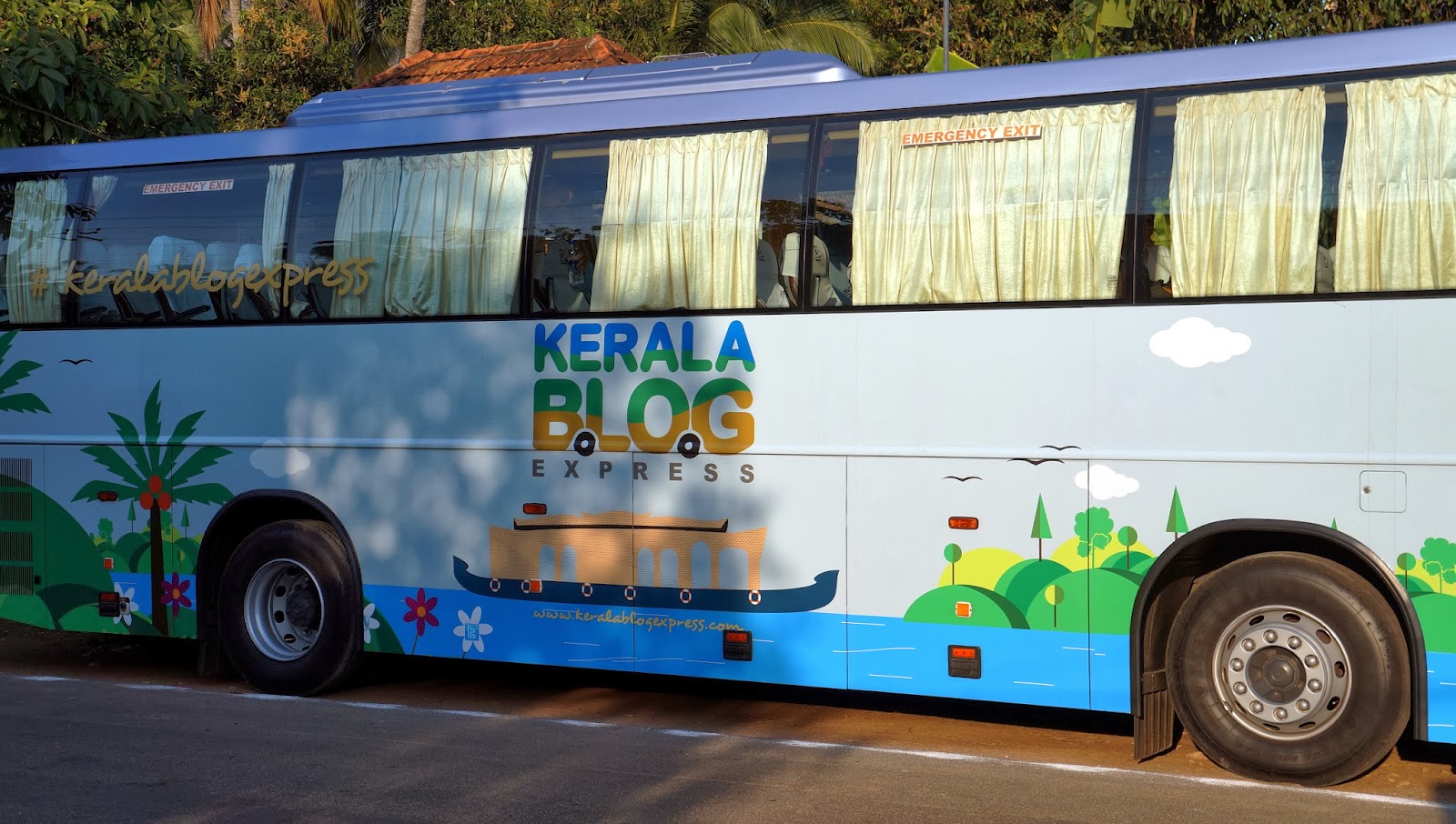The plan was to give you daily reports from my Kerala experience. But you know what it's like with plans. Our schedule turned out to be very tight. We spent long hours on the bus, stopping for tea and toilet, snacks and lunches in fancy hotels (Kerala is not a good place for dieting), taking pictures, and last but not least sightseeing. And by the end of the day when we reach our hotel we're so tired that usually we just check our emails quickly, have a beer or two and we would go to sleep.
On top of that for some strange reason internet is available usually in the lobby and the restaurant, and not in the rooms. And it's a bit slow too, so blogging is not easy. Well, maybe it's for people to socialize more instead of sitting in front of computers all evenings long. If that's the official reason then I have to say it worked:) Anyway, considering all the above this will not be a day-to-day report. Hope you don't mind.
Let's start with tea then. It grows all around Munar, 130 kilometers east from Cochin. It was a bit less hot and humid there than at the seaside, after all we were in Whestern Ghats mountains, but it was still nice and warm. Tea plantations spread all the way to the horizon with extremely green, perfectly cut bushes that look like a soft, green carpet.
We were coming to Munar from Thekaddy with our noses (and lenses) glued to the window. Every stop on the way as well as our sunset trip ended up with a search for two most avid photographers in our group: Oscar and Edin. Yes, tea plantations are very photogenic.
We were coming to Munar from Thekaddy with our noses (and lenses) glued to the window. Every stop on the way as well as our sunset trip ended up with a search for two most avid photographers in our group: Oscar and Edin. Yes, tea plantations are very photogenic.
Around thousand people every day delivers freshly picked leaves to Manupatty Factory, owned by TATA which, by the way here in India makes everything from pins to cars. Tea pickers live in the area, in colorful houses on the hillsides. Management lives nearby too, although they occupy beautiful residences that remember good old times.
Factory provides not only accommodation but also healthcare and education for children - among green hills there are two schools. One for pickers' kids, the other one for management's. This is not a good place for those who dream of a career from rags to riches. Career path of factory managers is simple: their fathers were the ones in charge too.
Tea picker has to pick 12 kilo of leaves a day and that's for how much they get their daily basic rate: around 4 USD. Anything above they get paid extra, and to pluck the required minimum it takes a skilled worker around 2 hours. We were told that the average for those 1000 people delivering leaves to Manupatty is around 50 kilos daily. Each one kilo of leaves will become 250 grams of tea. Annually factory makes 2.5 million tons of tea.
For the best quality product tea leaves are plucked by hand - only 3 leaves from the top of each plant. Women we've seen working at tea plantation had some kind of scissors they used for cutting leaves.
Once the leaves are delivered to the factory they are spread on a large troughs and left for shriveling for 18 to 20 hours. During that time the water amount in leaves gets reduced from 80% to 60%. Next step is crushing, tearing and curling the leaves. After 15 minutes leaves turn into a green pulp. At this stage it still doesn't remind of tea.
From there green pulp goes to huge containers for oxidation and fermentation. During that process tea turns brown and starts looking like tea. Green tea doesn't go through this process. Drying is the next process - by this stage the the water content went down to some 55%, after drying it'll go down to 3.
Last step is sorting. Huge sieves divide tea bits according to size into dozens of final products. The biggest ones after brewing taste mild, the smallest are the strongest. That dust we sometimes laugh that it comes from sweeping the floor of tea factory, here in India is the most desirable. People in India like their tea strong (and - of course - with milk).
Factory is not open for tourists, although from what we've heard they get many inquiries that they may start doing organized tours at some point. Until then those who want to learn more about tea there is Tata Tea Museum in Munnar.
PS. No photography was allowed inside the factory.


























